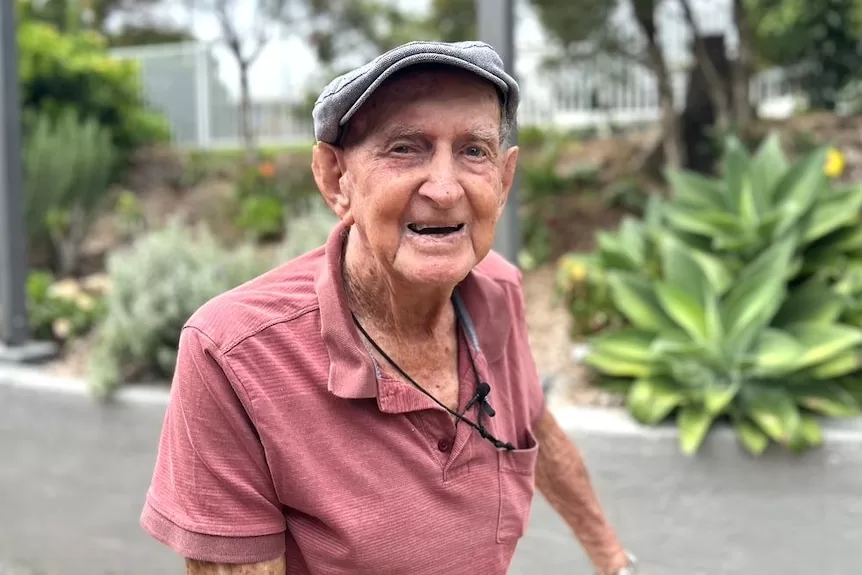Len Hughes pioneered the unusual art of matchcraft.
Over the past 60 years, the 88-year-old has made hundreds of intricate models out of glue and tiny pieces of wood, which have been seen by millions of people in 22 countries.
The obsession started when Mr Hughes was in his 20s and doctors told him he would eventually end up in a wheelchair.
“I had a bad back and nothing could be done for it, so I made up my mind I had to find something to do,” he said.
Inspiration struck when he saw some matchstick models made by school children.
“I was so fascinated, I told my wife ‘I’m gonna stick matches together’,” he said.
Mr Hughes gathered supplies and got to work building a replica of a Dutch Windmill.
It was not a success.
“It went in the garbage bin,” Mr Hughes said.
He never ended up needing a wheelchair, but the self-taught sculptor stuck to his craft until he mastered it.
“I’ve got patience plus, I wish everybody had it,” Mr Hughes said.
Building an empire
The first large-scale piece Mr Hughes built was a model recreation of the Battle of the Spanish Armada.
It took two years and eight months, and more than 243,000 matches, to complete the model’s 331 replica ships, while glass from a broken windscreen created the illusion of the ocean.
When it was complete, he opened the World of Matchcraft Museum in Caloundra, on Queensland’s Sunshine Coast.
Loading…
It became a popular stop for tourists, and was even featured on the Australian travel show Ask the Leyland Brothers.
Alongside the Spanish Armada, Mr Hughes displayed his other creations, including a 5-metre replica of the Sydney Harbour Bridge, a 4.5m model of the Titanic, and a copy of the Roman Coliseum with a diameter of 1.5m.
Mr Hughes continued making models in his front room, using photographs, architectural drawings, and his mathematical mind to ensure the replicas were all accurate to scale.
Going global
The World of Matchcraft closed down in the early 90s, but soon a new opportunity came knocking.
Ripley’s Believe It Or Not! wanted the sculptures.
“They came to my door and made an offer,” Mr Hughes said.
Ripley’s director of exhibitions John Corcoran said the company first found out about Mr Hughes’s models in 1988 and had been trying to acquire them for years.
“We bought his entire collection,” Mr Corcoran said.
“One of our slogans is ‘things you can’t see anywhere else’, and this certainly fits that bill.
“The longer you look at it, the more detail you see.
“You just sort of sit there and go, ‘How could anyone have the patience to … put all those matchsticks together?’.”
Around 600 pieces were distributed between 22 Ripley’s museums across the world.
“The Sydney Harbour Bridge was on display in Atlantic City for 27 years,” Mr Corcoran said.
“The Spanish Armada, which was the spectacular one, was on display in New York for about 15 years.”
Several pieces are still on display, including a Taj Mahal model in Thailand and a working acoustic guitar on the Gold Coast.
“Millions of people have gotten to see this incredible work he’s done,” Mr Corcoran said.
Piecing together his story
At his home in Bli Bli, Mr Hughes is now in the process of writing his life story and hopes to publish a memoir.
He still spends hours gluing matches together and is currently completing a collection of native animals.
“I haven’t done the quoll, the quokka, or the possum yet — you name the rest, they’re all there,” he said.
Mr Hughes said he hoped to find a home for the animal sculptures in an Australian museum.
Get our local newsletter, delivered free each Wednesday







